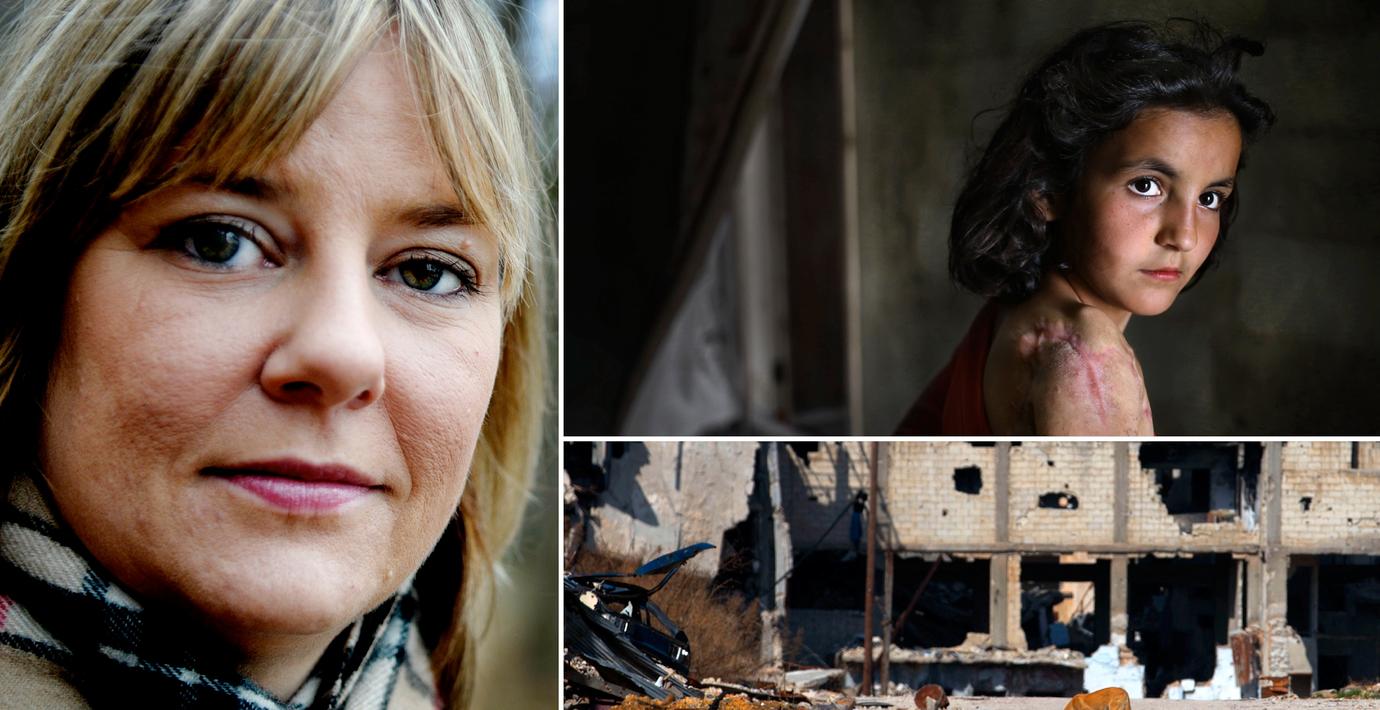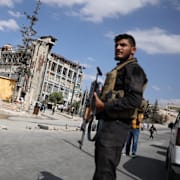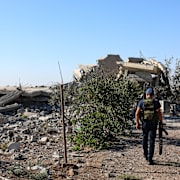
Röda Korset-ordföranden: ”En osannolik grymhet”
”Det jag bevittnade - till exempel i Homs, förut en fantastisk stad av Stockholms storlek - är osannolikt i sin grymhet”. Så skriver Anna Carlstedt, ordförande för Svenska Röda Korset, i en debattartikel i Aftonbladet. Carlstedt har nyligen varit i Syrien – där kriget i dag går in på sitt sjätte år.
”Om inte vår systerorganisation Röda Halvmånen och andra fick tillträde till städer och byar med vatten, mat, blöjor, mediciner och värmekällor skulle människor frysa och svälta ihjäl”, skriver hon.
Carlstedt skriver att det är obegripligt att omvärlden inte gör mer för att hjälpa krigets offer.
”Efter att ha varit där ställer jag mig frågan: För vem är flyktingsituationen en kris? För Sverige? För EU? Eller för de fyraåringar jag mötte i Homs?”
bakgrund
Belägringen av Homs
Wikipedia (en)
The Siege of Homs was a military confrontation between the Syrian military and the Syrian opposition in the city of Homs as a part of the Syrian Civil War. The siege lasted three years from May 2011 to May 2014 and resulted in an opposition withdrawal from the city.
Nationwide anti-government protests began in March 2011, and clashes between security forces and protestors in Homs intensified in April. In early May 2011, the Syrian military conducted a crackdown against anti-government protesters in Homs, some of whom were armed and fired on security forces.
While the Syrian government had succeeded to temporarily quell the March–April Daraa protests with a large scale military operation, this early May military operation in Homs failed to succeed likewise.
By September, sectarian clashes and bloodshed in Homs between Alawites and Sunnis played a larger role in Homs than in the rest of Syria.
In late October 2011, a Free Syrian Army brigade built around defected army officers repeatedly ambushed government’s security forces around the Baba Amr neighbourhood of Homs and through early November successfully defended the Baba Amr neighborhood. In late December 2011, an Arab mission was sent to monitor the situation following the Arab League plan. Following the abortive mission, the Syrian Army in February 2012 launched an offensive against Baba Amr, shelling the entire district and blocking all supply routes. In early March, government forces launched a ground assault into Baba Amr, forcing the rebels to withdraw from the neighborhood.
By early May 2012, following a UN brokered cease-fire, only sporadic street fighting and shelling occurred. During this time, the government was in control of most of the city. The opposition held between 15% and 20% of Homs while fighting for control of a similar-sized area was still ongoing. In December 2012, the Syrian Army captured the district of Deir Baalba, leaving only the Old City, Khalidiya district, and a few other areas under rebel control.
In early March 2013, government forces launched an assault into several rebel-controlled neighborhoods, but the rebels, reinforced by units that arrived from the nearby rebel-controlled town of al-Qusayr, managed to repel the attacks. In mid-March, rebels attempted to retake Baba Amr, but were forced to pull back later in the month. In March and early April 2013, the Lebanese Hezbollah militia moved fully into the Homs’ fighting, in assistance to the Syrian government forces. In late July, government forces captured the Khalidiya district.
In early May 2014, following an agreement reached between the government and the rebels, rebel forces were allowed to evacuate the city, leaving Homs under full government control.
Homs, Syrien
Omni är politiskt obundna och oberoende. Vi strävar efter att ge fler perspektiv på nyheterna. Har du frågor eller synpunkter kring vår rapportering? Kontakta redaktionen



